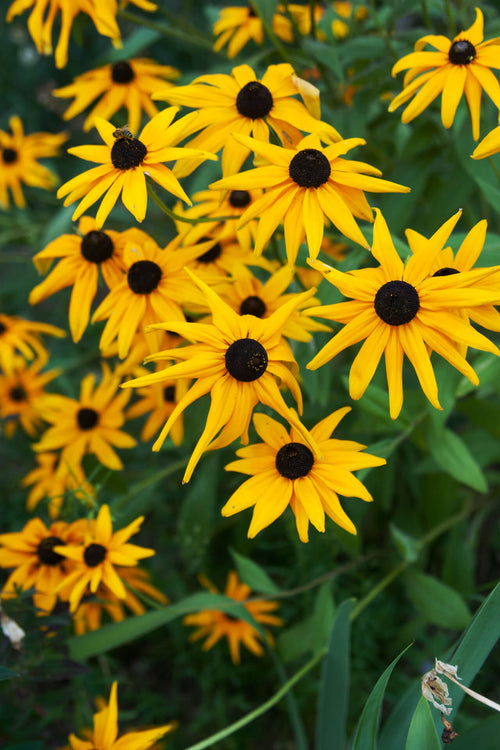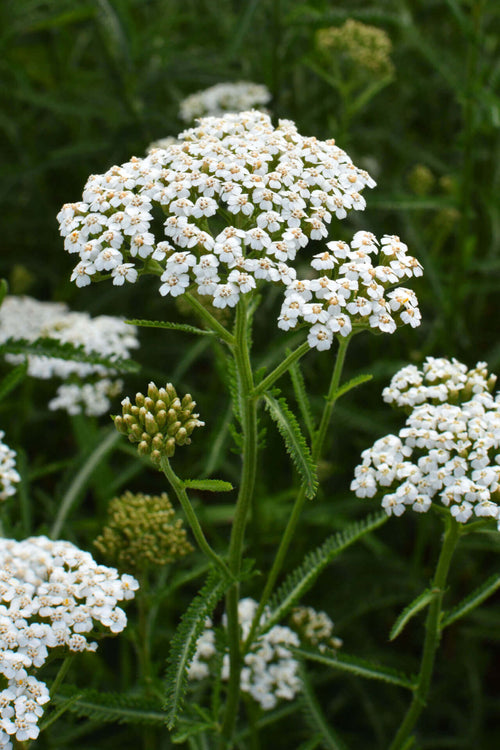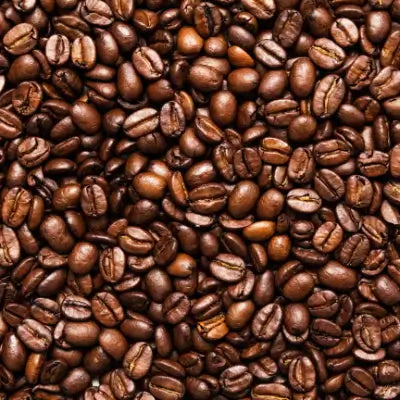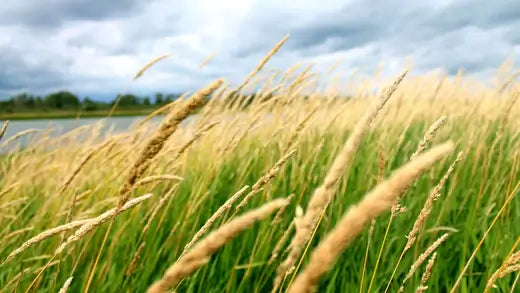10 Hardy, Disease-Resistant Perennial Plants for a Vibrant Garden
Introduction Creating a beautiful and thriving garden requires carefully considering the plants you cultivate. Perennial plants, known for their ability to return year after year, are popular among gardeners for their longevity and ease of maintenance.
When selecting perennials, it's essential to opt for varieties that withstand the test of time and demonstrate resistance to diseases. This article will explore ten hardy, disease-resistant perennial plants to help you achieve a stunning and vibrant garden.
Lavender (Lavandula spp.) Lavender is not only prized for its fragrant blooms and soothing scent but also for its remarkable disease resistance. This perennial thrives in well-drained soil and full sun, making it a versatile choice for various garden designs. Its natural oils deter many pests and diseases, ensuring your garden remains healthy and fragrant.
Black-Eyed Susan (Rudbeckia spp.) Black-Eyed Susan. With its bright yellow or orange petals and dark centers, this perennial adds a pop of color. It's highly resistant to pests and diseases, including powdery mildew. Black-Eyed Susan thrives in full sun to light shade.
Russian Sage (Perovskia atriplicifolia) is prized for its feathery foliage and spiky clusters of lavender-blue flowers. This perennial is drought-tolerant and resistant to various diseases. It flourishes in sunny locations with well-draining soil and can bring an airy elegance to your garden.
Coneflower (Echinacea spp.) Coneflowers are known not only for their distinctive appearance but also for their immune-boosting properties. These perennials are resistant to many common garden pests and diseases. Colors, making them suitable for multiple garden styles. Sedums thrive in sunny locations and are particularly well-suited for rock gardens and dry areas.
Daylily (Hemerocallis spp.) Daylilies are known for their hardiness and low-maintenance nature. These perennials come in various colors and patterns. They can thrive in different soil types and light conditions, making them versatile for any garden.
Yarrow (Achillea spp.) Yarrow is a challenging and adaptable perennial that displays clusters of small, colorful flowers. Its strong fragrance deters many pests, and its resilience against diseases like powdery mildew makes it a reliable addition to your garden. Yarrow prefers full sun and well-draining soil.
Peony (Paeonia spp.) Peonies are cherished for their stunning, large blooms and enchanting fragrance. These perennials are generally disease-resistant and can thrive for decades with proper care. They prefer rich, well-draining soil and appreciate a sunny spot in the garden.
Catmint (Nepeta spp.) Catmint is a low-maintenance perennial that produces spikes of lavender-blue flowers. Its aromatic foliage deters pests, and it's relatively resistant to diseases. Catmint thrives in full sun and well-drained soil, and it's a favorite among pollinators like bees and butterflies.
Astilbe (Astilbe spp.) Astilbe is prized for its feathery plumes of flowers that bring texture and color to shaded garden spots. This perennial is generally disease-resistant and thrives in moist, well-draining soil. Astilbe's ability to brighten shady areas while resisting diseases makes it a valuable addition to any garden.
Incorporating disease-resistant perennial plants into your garden ensures a vibrant and colorful landscape
It also minimizes the challenges that pests and diseases can pose to your plants. In the gardening world, the allure of a well-maintained garden adorned with vibrant and disease-resistant perennial plants is irresistible. These remarkable botanical wonders add to the aesthetic appeal of outdoor spaces.
Disease-resistant perennial plants have revolutionized how we approach gardening, offering sustainable and low-maintenance solutions that contribute to the beauty and health of our landscapes. Perennial plants, by definition, live for more than two years, often returning season after season with minimal intervention.
Incorporating disease-resistant traits into these plants further enhances their longevity and vigor. The result is a garden that flourishes with less reliance on chemical interventions, promoting a more environmentally friendly and sustainable approach to landscaping. One of the primary advantages of disease-resistant perennials is their ability to withstand a variety of common garden ailments. These plants have been bred or naturally selected to resist diseases like powdery mildew, rust, and fungal infections.
This resilience significantly reduces the need for chemical pesticides and fungicides, fostering a healthier ecosystem for the garden and its inhabitants. Gardeners can enjoy their green havens without worrying about harmful chemicals seeping into the soil or affecting beneficial insects and pollinators. Using disease-resistant perennial plants also aligns seamlessly with the principles of low-maintenance gardening.
Once established, these plants require less frequent replanting, reducing labor and financial costs. This quality particularly appeals to individuals with busy lifestyles who still wish to indulge in the joys of gardening. Moreover, the hardiness of these plants often allows them to thrive in various climates and soil conditions, minimizing the need for constant attention and care.
Disease-resistant perennial plants offer a stunning array of colors, shapes, and sizes that can cater to various design preferences
From the delicate petals of coneflowers (Echinacea spp.) to the stately elegance of astilbes (Astilbe spp.), these plants contribute to the aesthetic diversity of any garden. Whether you're aiming for a cottage-style garden bursting with florals or a contemporary landscape with architectural elements, there's a disease-resistant perennial to match every vision.
Beyond their immediate beauty, these plants can also play a vital role in promoting biodiversity. It not only adds life and movement to the garden but also assists in pollinating other plants, thereby enriching the ecosystem. In conclusion, the garden adorned with disease-resistant perennial plants is a testament to the symbiotic relationship between nature and human cultivation. It showcases the advancements in horticulture that enable us to create beautiful, sustainable landscapes while minimizing the ecological footprint.
These plants offer a canvas of colors, textures, and forms requiring less intervention, making them a perfect choice for seasoned gardeners and those new to horticulture. As we prioritize environmental stewardship and seek beauty in harmony with nature, disease-resistant perennial plants stand as a beacon of inspiration for gardens that flourish and thrive.



















































